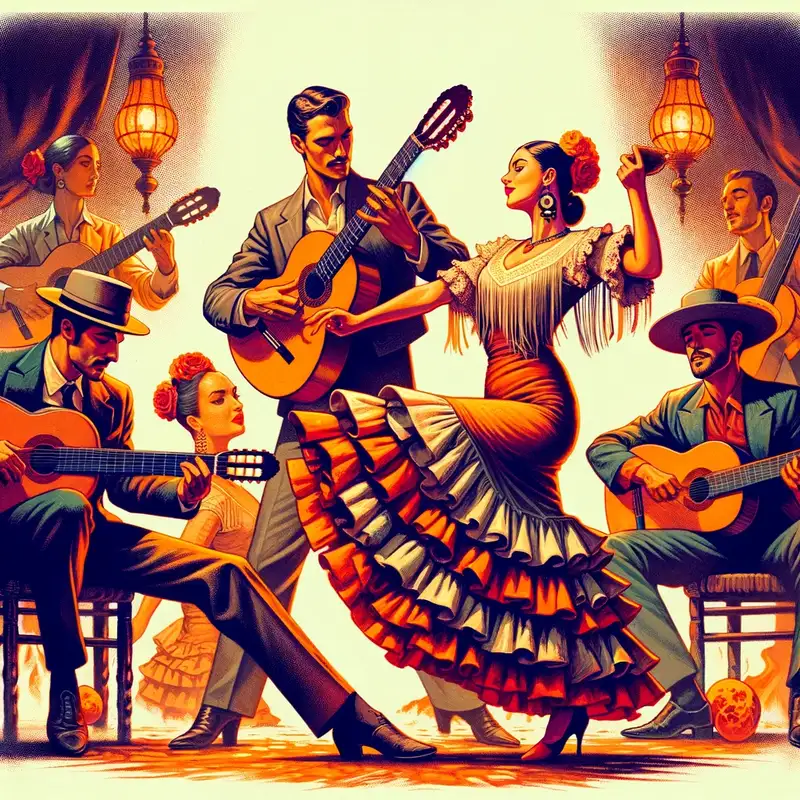Flamenco

Flamenco, a passionate and deeply emotive art form, originated from the Andalusian region of Spain.
With its fervent cante (singing), intricate toque (guitar playing), and intense baile (dance), it’s a reflection of the Romani, Moors, Castilian, and Sephardic Jews’ diverse cultural influences in Spain.
Table of Contents
Historical Roots
The precise origins of flamenco remain a topic of debate, but it’s widely believed that the art form developed over several centuries, beginning in the late 15th century. It absorbed a myriad of cultural influences, especially from the Romani and Moorish communities, which had a profound impact on Andalusian culture.
Core Elements
Flamenco is not just a dance or a song; it’s an intricate blend of multiple elements:
- Cante (Singing): The voice behind flamenco, cante can be somber, jubilant, or deeply soulful, reflecting a wide spectrum of human emotions.
- Toque (Guitar Playing): The flamenco guitar provides a rhythmic and melodic foundation, often punctuating and accentuating the dancer’s moves and the singer’s voice.
- Baile (Dance): Flamenco dance is a powerful mode of expression, characterized by its swift footwork, graceful arm movements, and profound emotion.
- Palmas (Hand Claps): These rhythmic handclaps maintain the tempo.
Styles and Palos
Flamenco comprises various styles, known as “palos”. Each palo has distinct musical and rhythmic patterns:
- Soleá: One of the foundational styles, solemn and profound.
- Alegrias: Meaning “joys,” it’s a livelier style, more upbeat and festive.
- Seguiriya: Deeply intense and tragic in tone.
- Tangos: Not to be confused with the Argentine tango, flamenco tangos have a lively, rhythmic pace.
Notable Artists
- Camarón de la Isla: One of the most iconic cante singers, known for his modernizing influence on flamenco.
- Paco de Lucía: A legendary flamenco guitarist who expanded the horizons of the genre.
- Carmen Amaya: A renowned dancer who mesmerized audiences globally.